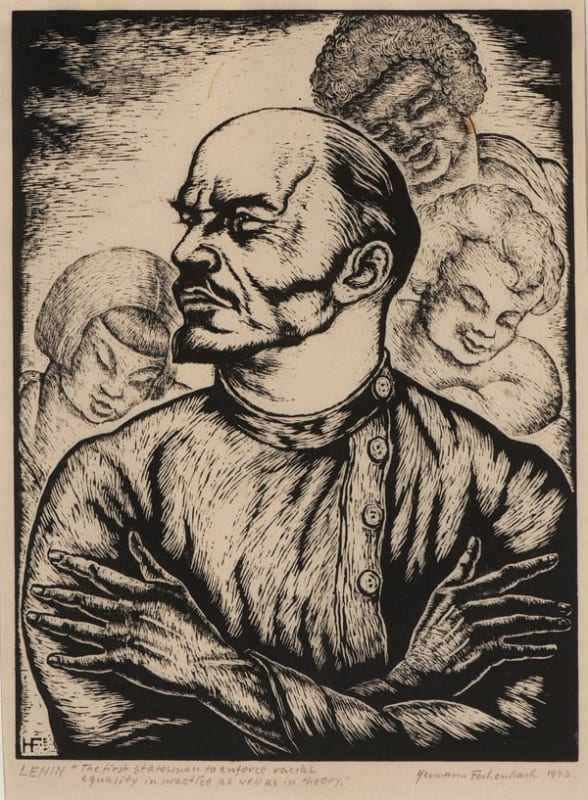Painter and graphic artist Herman Fechenbach was born into a Jewish family in Württemberg, Germany on 11 January 1897. He fought and was severely wounded in the First World War. He studied in Stuttgart, Munich and Florence then travelled widely before settling in Stuttgart in 1924–5 where his work was influenced by Die Neue Sachlichkeit. He produced a number of wood engravings on Old Testament subjects (c. 1930). He was forbidden to exhibit by the Nazis in 1933 and fled to Palestine in 1938. Examples of his woodcuts were included in the 'Exhibition of German-Jewish Artists' Work: Painting, Sculpture, Architecture' (5-15 June 1934) organised at the Parsons Gallery, London by German-Jewish émigré dealer, Carl Braunschweig (later Charles Brunswick), which included in total 221 artworks by 86 artists suffering persecution under the Nazi regime. Fechenbach arrived in Britain in 1939, where he worked as a painter and wood engraver to raise funds to help his remaining family escape from Germany. He was interned on Hutchinson, Isle of Man, with Schwitters, Uhlman, Weissenborn, and art historian Klaus Hinrichsen (1940–41) and went on hunger strike in protest, then produced a series of linocuts entitled My Impressions as Refugee.
He later published a book of wood engravings Genesis: the First Book of Moses in 1969. He exhibited in Oxford (1942), Ben Uri (1945, 1947) and at Blond Fine Art, London (1985). His work was included in Kunst im Exil in Großbrittanien 1933–45 (Berlin, Oberhausen, Vienna, London) in 1986. Herman Fechenbach died in Denham, England on 6 December 1986.


